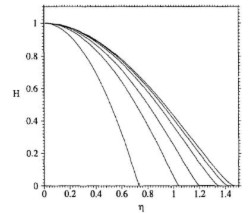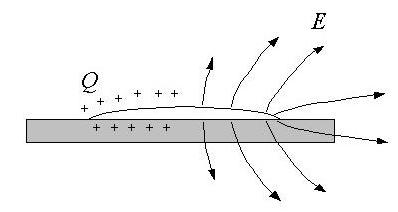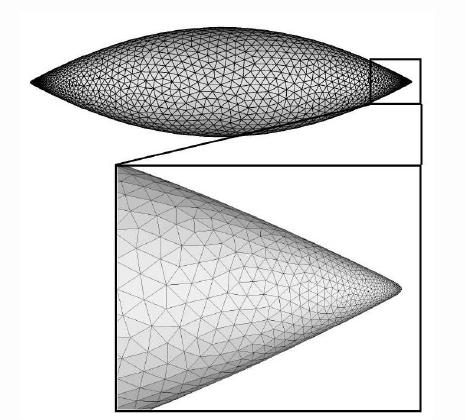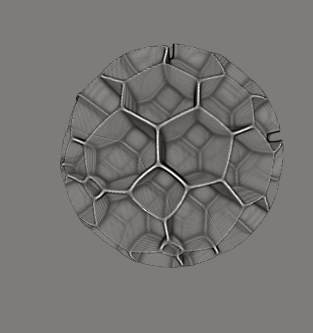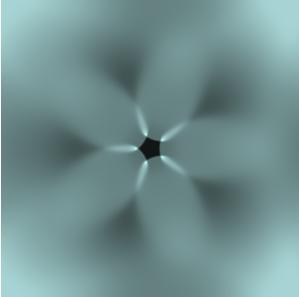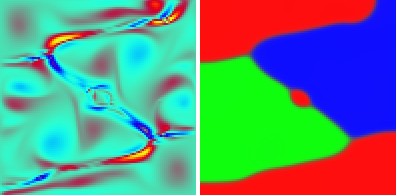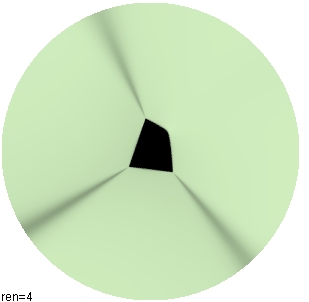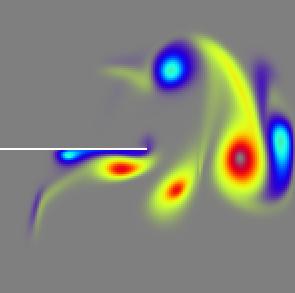Molecular
simulation of cusp formation: the problem is whether a cusp can
form at the free surface of a liquid at the molecular scale. Koplik and
Banavar found a negative result (Phys. of Fluids
1994 Volume
6, Issue 2, pp. 480-488). However, this was due because they studied
the
interface between two fluids of similar viscosity. If one repeats the
simulation with a
fluid-vacuum interface, cusps do
appear. The simulation is tricky
because the temperature must be carefully controlled. If it is too
high, the interface becomes diffuse. In the right range of temperature,
we observe
cusps as shown in the link below (be patient, the animation has
20MB):
